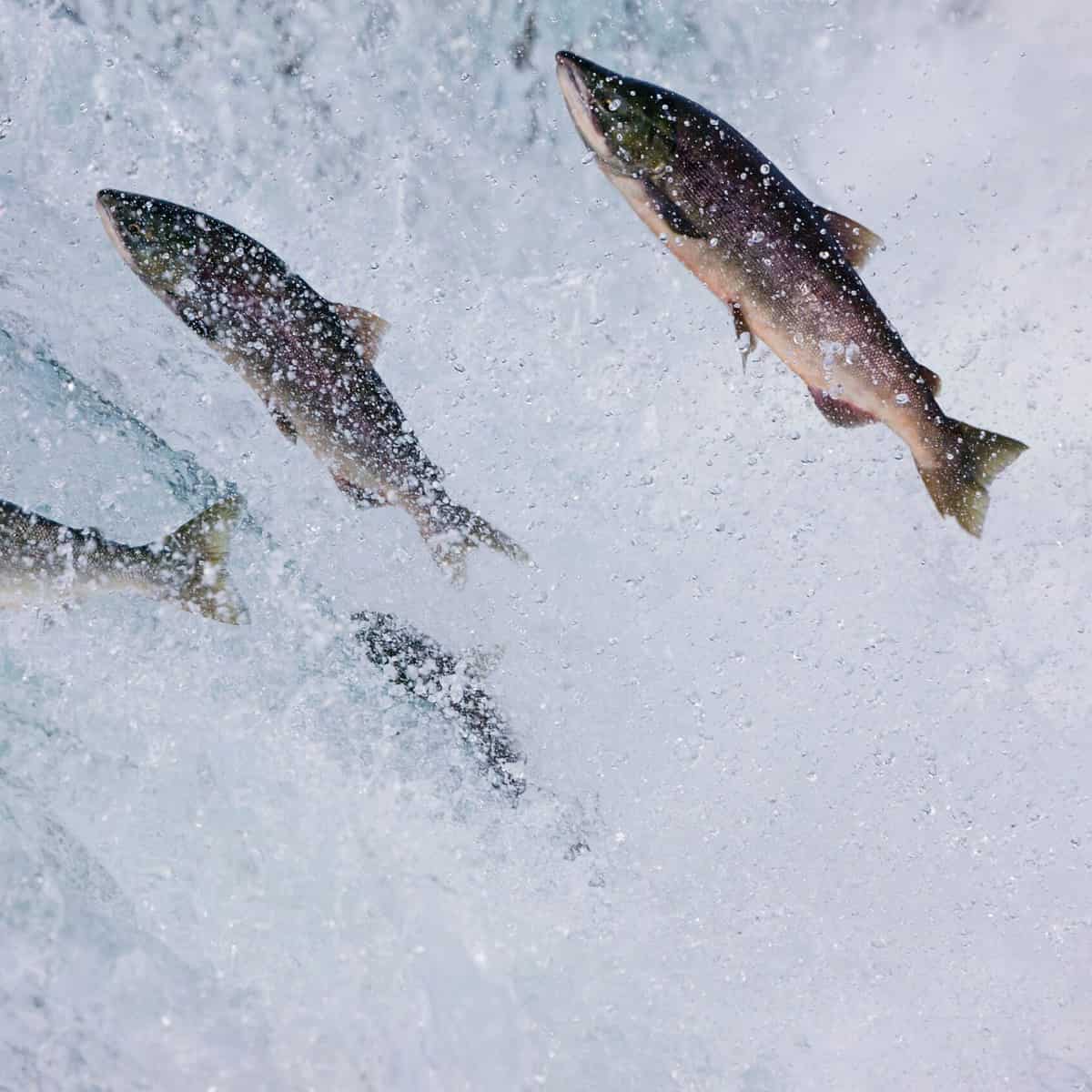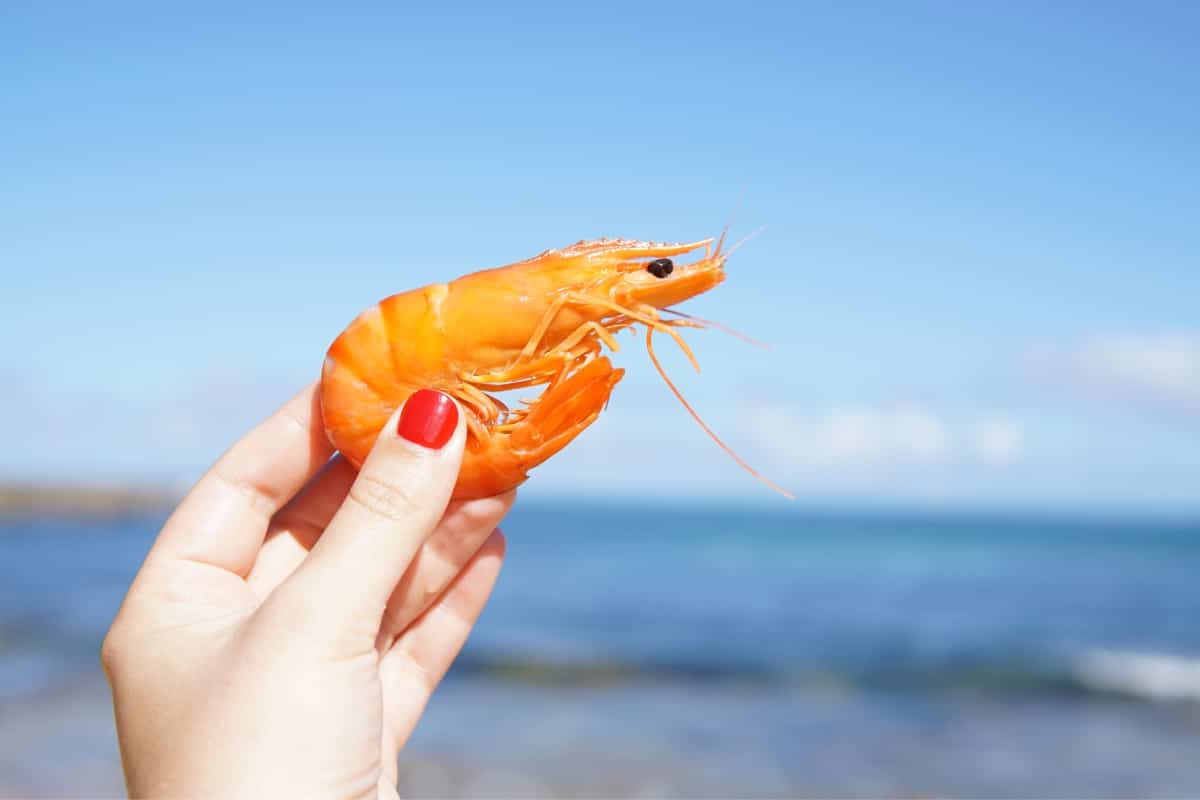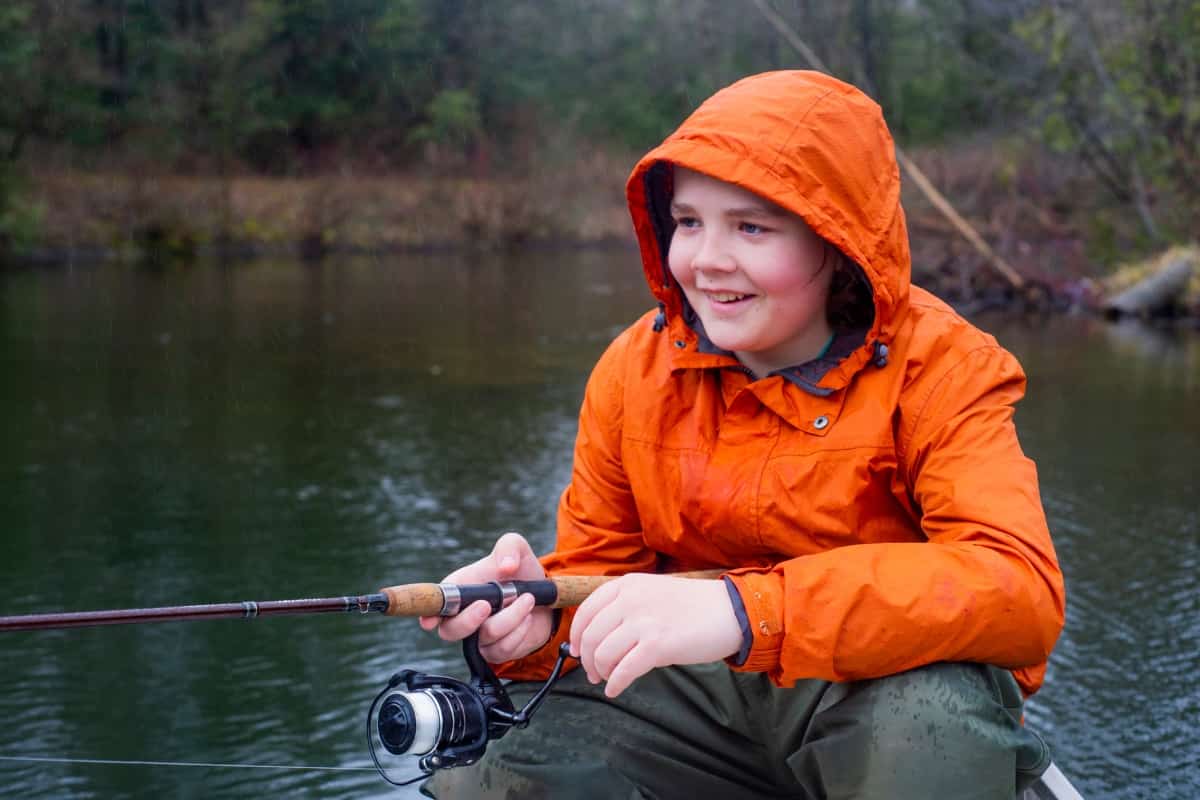Winter brings a new perspective and necessitates particular approaches to catching those sensitive trout compared to summer. Hence, anglers must take extra measures due to the cooler temperatures to maximize their time and enjoyment.
To do this, we’ll go through some tips on winter fly fishing depending on water temperatures or conditions, what food to use and how to feed them, and where you, as an angler, should go on your next fishing trip!

Here are a few more articles on trout fishing you might want to check:
About Winter Trout
Understanding what happens to a trout throughout this season is your first step toward catching more fish of this type in the winter.
Cold Blooded Fish
To start, trout are cold-blooded fish; thus, they don’t need constant body temperature. When the temperature drops, however, there is less feeding behavior.
The water temperature normally follows the air, though at a slower speed. Compared to impounded water, the water temperatures of a spring creek or tailwater below a dam can be rather steady.
Slower Metabolism
Although trout slow down throughout the winter, these fish never stop eating. It’s true that during the winter, the food supply in some rivers and current seams is reduced.
It’s also correct that when the water temperature decreases, a trout has slower metabolism, limiting the quantity of energy it requires to survive. But they must live, and as a result, trout consume all winter.
How to Find Trout for Winter Fly Fishing?
A piece of insider advice: when there’s food on the water, the fish will suspend in the riffles and tails of pools. Moreover, if there are no smaller flies on the water, or if the wind blows fierce and startles them, they go deeper into the water along the banks, submerged boulders, and deep pools.
As they slow down during the weather, trout (such as brown and rainbow trout) like to be near the stream, where the water in a river is more oxygenated. Hence, here are reasons why fishing in the river is beneficial for you, based on experienced anglers.
First, you’ll almost certainly get the river to yourself, which is why it’s the angler’s favorite. Many anglers take a break from fishing for a few months to pursue other hobbies such as skiing. While others simply despise the cold.
Therefore, make the most of the opportunity to try some new approaches in a river or stream that may be impacted by spring water or a river that benefits from the bottom-release dam flow to make your chances of finding this fish fairly good.
5 Tips for Winter Trout Fishing
1. Anticipate For Dry Fly Action But Intend To Nymph
Fly-fishing in the cold days is a nymphing extravaganza. As a result, you must know when to cast your rod. Here’s a bit of insider advice for you; to keep your flies at the bottom, use a double-nymph rig with a smaller midge pattern on top and a weighted stonefly below.
The majority of insects do not hatch in the winter, however, midges and BWOs do. However, that isn’t to claim that they only develop in the winter. You’ll still have days when you don’t want to touch a dry fly.
Indeed, there are abundant bug hatches even in the coldest trout streams. Although you’re unlikely to see large bugs, dry-fly fishing for this kind of fish rising to a midge may be thrilling when the water is calm in the winter.
However, despite them being extremely small., there’s still a way of catching them. A size 20 Griffith’s Gnat fly designed to simulate a cluster of midges caught together in the surface layer during a midge hatch is an excellent choice.
2. Dead Drift a Streamer
If you can’t resist taking a streamer from your box, consider fishing it differently than you would in the summer. As a matter of fact, as these types of fish slow down a lot in the winter, they aren’t as eager to chase food as in the summer.
However, if served well, a large substantial dinner is difficult to resist. If you want to hook this kind of fish with a streamer in the winter, tuck it beneath an indicator and fish it like nymphs.
Here’s a piece of insider advice for beginners, dead drifting is the most efficient method to hit a trout in the face with flies. Additionally, aggressive methods like stripping streamers or swiftly swinging wet flies are not the way to go.
3. Small and Light is the Way to Go
Everything calms down when the temperature drops, and your performance should do the same. Because these kinds of fish aren’t as active in the winter as in the summer, they won’t be as keen to chase food. Rather, they’ll stay hidden and eat when the opportunity arises.
Moreover, even if you’ve hooked on the perfect nymph, make sure the appearance is correct. Hence, you want to put the small fly on a silver tray and present it to the trout, so they don’t have to do much work to eat it. They’re considerably more likely to take the fly if they don’t have to use much energy to bite.
On the other hand, with a light tippet, switch to 5X if you regularly fish 4X. This will let the smaller flies move more naturally, avoiding spooking fish in slower-moving waters, where they will have more time to inspect your fly.
A piece of insider advice for beginners, Smaller flies, and a lighter tippet is appropriate for clear water, smaller insects, wary fish, and slow water that you can use for the rest of the year.
4. Take a Nap
One of the nicest things about winter trout fishing is that you don’t have to hurry out of the house first thing in the morning.
Hence, when fishing on snowy days, there’s no need to go out during the day. The greatest fishing will be from late morning or early afternoon until mid-afternoon or the hottest weather. So you can have a full breakfast before you go.
5. Slower Waters
It is a good place to catch trout. Since trout metabolism slows down in the winter, they’re consuming less and seeking methods to save energy, such as escaping the stronger currents and into calmer seas.
Safety Precautions for Winter Fishing
Fishing in winter can be dangerous. Therefore, here are some safety precautions to arrive and leave your destination safely.
Travel Cautiously
Be prepared for terrible weather and hazardous roads when traveling in the colder months. Tell someone where you’re going and when you plan to return. Also, don’t forget to check in when you arrive home.
Use a Wadding Staff
Wading may be made significantly more difficult by snow and ice. And falling in the water during the winter is not something you want to happen.
Recognize Hypothermia
Hypothermia should be avoided at all costs. If you can fall into the water, you’ll want to get warm and dry as soon as possible. Therefore, bring with you an extra set of dry clothes and a means to brew hot drinks.
Conclusion
Fishing for trout in the winter doesn’t have to be difficult. You can have a great time despite the cold weather if you have the right knowledge and gear.
So, whenever you’re planning to go fishing for trout in the cold season, don’t hesitate to use this article as a guide. Good luck, and happy fishing!



 Facebook
Facebook YouTube
YouTube









